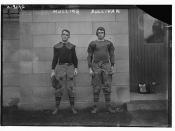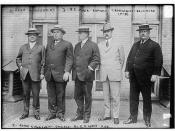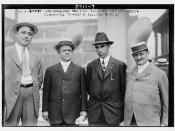In Depression-era Chicago, hit-man Michael Sullivan is known to friends and enemies alike as the Angel of Death. Uncompromising in his work, Sullivan is just as devoted to his private life as an upstanding husband and father of two young boys. But when those worlds collide, taking the lives of his wife and younger son, Sullivan and his surviving son, Michael Jr., leave their sedate home life behind and embark on a startling journey of revenge. In order to truly understand the nearly unsurpassed precedent of Sam Mendes' Road to Perdition, one must analyze the standard literary textual elements of the film. Character development, themes, and setting are the elements that play the largest part in the literary text of this film. In most films, it is character development that plays the largest literary role.
Hanks inhabits a character who is drastically different from the good guy roles moviegoers have come to expect from him.
In this movie, he is not a hero but an antihero. Hanks plays Michael Sullivan, a professional hit man on the payroll of his surrogate father figure, Paul Newman's John Rooney. Rooney is an Irish gang lord who rules a small town somewhere outside of Chicago, and is well connected to the Capone gang. In the beginning of the movie, Sullivan attempts to maintain the pretense of an everyday life with his wife, played by Jennifer Jason Leigh, and his two sons, Peter and 12-year-old Michael Jr., played by Tyler Hoechlin. Michael Sullivan comes home from work every day, goes upstairs to his bedroom, removes his suit coat, slips off the pistol and shoulder holster, and returns downstairs for dinner with his family, preceded by grace. However, this display of normalcy is short lived. Less than fifteen minutes into the film, the audience...



EXCELLENT
absolutely nothing to critisize great work keep it up
0 out of 0 people found this comment useful.